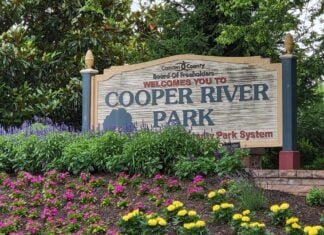
The Haddonfield Board of Education released new numbers for the upcoming bond referendum at its meeting last Thursday.
The latest numbers estimate the bond total to cost $35.3 million with an estimated yearly tax impact of $300.49 for the average assessed home at $484,226. The cost per average assessed home is up from the $287 estimated for the previously approved referendum number of $40.9 million. This is due to incorrect financial numbers, which were brought to the attention of the board at a previous meeting. Approval of the bond referendum was passed with an 7–1–1 vote, with Mary Fagan giving the only opposing vote and vice president Susan Kutner recusing.
Resident John Sullivan went to the board, saying he believed approved referendum figures in November were incorrect. Due to this, the board went back over the figures and discovered that they were in face erroneous.
“We want to thank John Sullivan a great deal. Although we are embarrassed the numbers were wrong, we would’ve been even more embarrassed if this had come up later in the process when people were asked to vote. So thank you for checking that and bringing it to our attention,” board president Glenn Moramarco said.
Because of this, the BOE took quick action and made changes to rectify the mistakes. It hired a new financial advisor, moved around some of the projects for the referendum and eliminated some items. All of the corrections and new bond referendum proposal have been sent to the state.
The new numbers are a bond referendum estimated at $35.3 million in total with an estimated yearly tax impact of $300.49 for the average assessed home at $484,226. This number is based on a 25-year bond with an interest rate of 3.53 percent.
“We cut down the price in the short run (by) making our new estimates based on a 25-year bond rather than the 20-year bond. The interest rate anticipated is 3.53 percent, which was market rate as of Jan. 4, 2016,” Moramarco said.
The $35.3 million referendum is down from the $40.9 million approved in November, but the costs for residents are estimated higher. The old figures are from the previous financial advisor for the bond. Due to this, the board approved a new financial advisor that night, Daniel Mariniello of NW Financial Group.
For Question 1, almost everything remains the same, except HVAC upgrades were taken out of Q1 and put into Question 2A, which is specifically on air-conditioning upgrades. Q1 includes the building envelope, or exterior, HMHS B-wing reconstruction, site work, electrical upgrades, special systems upgrades, HVAC repairs and air-conditioning for the middle school cafeteria, program renovations at HMHS, and HazMat and soft costs. The total cost of Q1 is estimated to be $30.2 million, with a cost of $253.37 for the average home per year.
“We moved some items from Q1 into Q2A, which was air-conditioning. Originally in Q1 items, we would get certain rooms air conditioner ready, even if Question 2 didn’t pass. Those were some very substantial costs, so all of those have been moved into Q2A. Those costs haven’t gone away, but are no longer in Q1. Fixing units and the middle school cafeteria are still in Q1, but anything considered an upgrade has been moved to 2A,” Moramarco said.
Question 2A will still include air-conditioning to be put in all classrooms and building automation system control upgrades to all schools. Q2A is estimated to be $3.7 million, with a cost of $30.70 per year for the average home.
Question 2B remains the same, including the stadium and track upgrades, except the new stadium lights and poles were taken out. According to Moramarco, the lighting and poles still need to be done, however the district is hoping to find funding in the regular budget or through the clubs and activities that use the lighting. Q2B is estimated to cost $1.4 million, with an average impact of $16.43 per year.
Question 2C was completely eliminated from the referendum. The question was for building envelope work deferred from Q1, which needs to be addressed due to ongoing deterioration, but the conditions are not as critical.
Sullivan, who attended the meeting, once again spoke to the board, thanking it for looking into the figures and updating the referendum accordingly. However, he was concerned with the numbers still. He especially wanted to note that this figure is on a 25-year bond and not a 20-year bond, which means that though the average cost per year might be lower comparatively, the bond would last for five additional years.
When it came time to vote, Fagan explained why she would be voting against the bond referendum approval that night. She felt that, though she supports a referendum to fix the buildings, she would have liked to proceed with the referendum at a later date after finding out the incorrect tax impact analysis for more time for input. Moramarco disagreed, saying he feels HPS is at a point where things need to move forward. Kutner recused as she is employed with the state Department of Education in the facilities and finance department. The referendum passed with an 7–1–1 vote by the board.
For information on the bond referendum go to HPS’s website at www.haddonfield.k12.nj.us. A video of Thursday’s meeting can be found at the Haddonfield Civic Association’s Vimeo at vimeo.com/user2961532.
Even more information and communication will be available to the public once the website for the referendum is launched. The website is expected to be live by Jan. 15. The referendum is scheduled for Tuesday, March 8.
Editor’s Note: This information includes a correction from the Haddonfield Sun Jan. 13–19 edition in the article “Haddonfield schools bond referendum tax impact increase.” The article previously said 8–1 vote, not including the recusal from Kutner.









